The sad news is that there are only 880 Mountain Gorillas left in the entire world. The good news is that we know where to find them and there are organizations that protect them. Rwanda is the top destination for those who want to see Mountain Gorillas in their natural habitat. They undeniably form part of Rwanda’s Top Five Natural Wonders. Here is our guide to Gorilla Trekking Safaris in Rwanda!
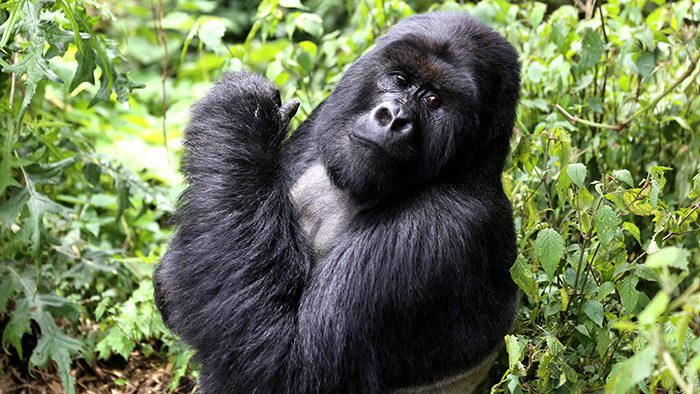
Rwanda has a tumultuous history, dominated especially by the genocide of 1994, when about 1 million people were killed, but for the last 15 years has been determined to put itself back on track and become a destination visited by tourists in the entire world for its spectacular sceneries and variety of unique flora and fauna.
Last year I was invited by the Rwanda Development Board (RDB) to explore Rwanda for 10 incredible days. Trekking for Mountain Gorillas was definitely my #1 experience in the country.

Mountain Gorillas live in the forests of the Virunga Mountains that stretch across the territory of Rwanda, Uganda and the Democratic Republic of Congo. These mountains are home to 480 mountain gorillas, which means more than half of the world’s entire population! The rest of them reside in Uganda’s Bwindi Forest. The most accessible tracks to getting to see gorillas are on the Rwandan side of the mountains, more specifically, Volcanoes National Park. This is where 7 gorilla groups live – more groups than anywhere in the world. We visited with the Kwitonda family. Kwitonda, which means “humble one,” is comprised of 18 members that includes two handsome silverbacks and a black back, or younger adult male gorilla.

Susa is the largest group living in the park. This massive family has 41 members, which include five year old twins named Byishimo and Impano. Volcanoes National Park is situated a three-hour drive from the capital city of Kigali. However, seeing them requires time, effort, and well-trained guides. Most of the tourists who are determined to see Mountain Gorillas choose to take part at a gorilla trekking safari.
You can experience this adventure throughout the year, but you should consider that hiking becomes a bit more challenging during the rainy season, which lasts from April to May and the entire month of November. Usually, most tourists choose to visit the gorillas between December and February, and from June to September, when Rwanda enjoys the dry season.

Since 2012 the costs for gorilla trekking in Rwanda increased to $750 USD/person. Make sure you apply in advance for a permit because only 80 permits per day are issued. This money is used for the preservation of the park and, among others, for paying guards to protect all 7 gorilla groups. Having a permit allows you to spend one hour admiring the gorillas. Here is some practical information about booking Rwanda safaris.

The level of difficulty depends on the weather, the time of the year you visit the gorillas and on the group you track with. It usually involves up to 2 to 4 hours of hiking, but it can take longer if the slopes are muddy and slippery, or you can have the luck to find them after a 30-minute hike. Take into consideration that you will hike at an altitude of 8,000 – 10,000 feet above sea level, so if you just arrived here from a low altitude you might become lightheaded. The best thing to do is spend a few days in Rwanda, to adjust to the altitude (Rwanda is situated at about 5,000 feet).
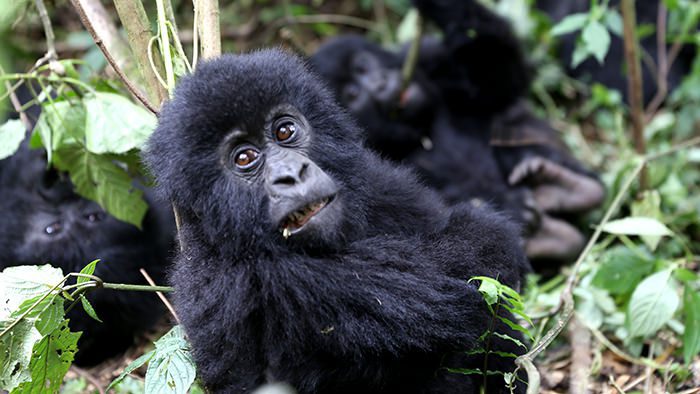
Expect an early morning start and a drive to the Kinigi village, the starting point for hiking. The guides speak English and they know their trails, so no worries here. You will be informed about some safety precautions and gorilla tracking etiquette, and divided into groups of 8, then driven to the base of the park. Your guides will lead the way and will have access to radio communication with the base camp the entire time. After a few hours, or just one if you’re lucky, you will get the fabulous chance to actually see and admire the gorillas in their natural habitat. While most of them will care less about their visitors and go on with their daily activities, some youngsters might be curious to see what you are all about. Remember the gorilla etiquette!

Since the gorillas share 98% of human DNA, you should make sure you don’t go near them if you have any infection, especially a respiratory one. They can catch a cold very quickly and, since they don’t have our immune system, this might be fatal for them. Only one group of tourists can see the mountain gorillas each day and your visit is limited to one hour.
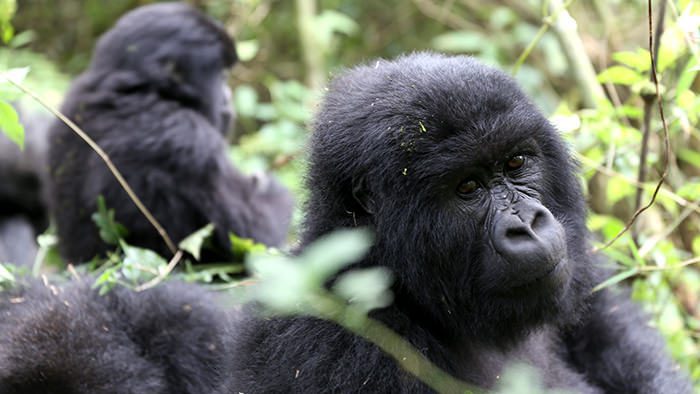
Always keep a distance of at least 15 – 20 feet from gorillas, and if they approach you, it’s your responsibility to move away without making any sudden movements and, very important, any noises (your guides will brief you before you head out trekking). You should keep your tone down during the entire visit and not stress them. They are used to seeing people, but you should bear in mind that they are still wild animals. Eating and drinking during your visit with them is not allowed.

Make sure you wear appropriate boots for hiking. It wouldn’t hurt to bring with you some gardening gloves to make your way through bushes and, of course, a walking stick will be helpful too. Long trousers are the best idea and always pack a waterproof jacket. Bring snacks and water with you, since you’ll get a break to have a snack. You may hire local porters to hold your backpack or help you during the complicated parts of the hike. You can take photographs of the gorillas, but never use flash.
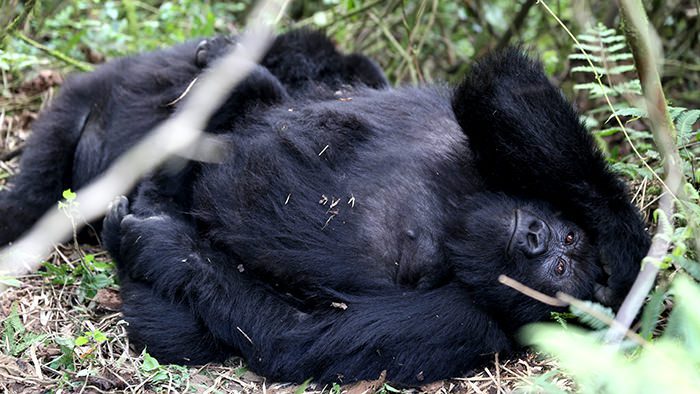
Gorilla trekking in Rwanda was one of the most rewarding experiences I’ve had in my life. Seeing these incredible creatures close up gave me a deep respect for their species and why it is imperative that we all do our part to save them. It was amazing to see how much the park rangers care about the gorillas. Every year the RDB holds a naming ceremony for 15-17 baby gorillas born every year. This event is an exciting time for the country, and an even more important stride towards gorilla conservation.
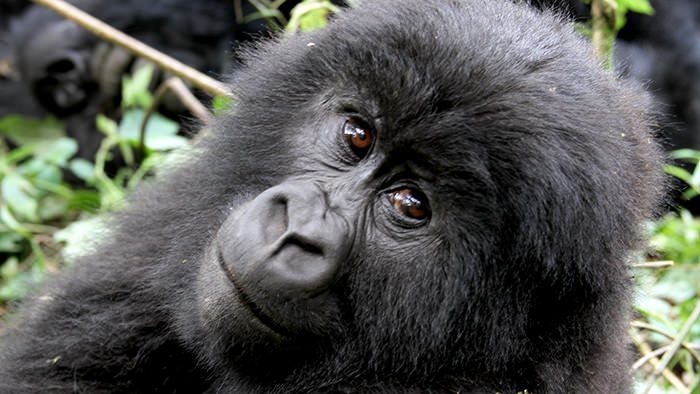
Capital city: Kigali
Languages: Kinyarwanda, French, English
Population: approximately 11 million
Time zone: UTC +2
Currency: Rwandan Franc (RWF)
Health issues: Rwanda is a yellow fever zone. The CDC recommends getting the vaccine before traveling to Rwanda. In fact, the government of Rwanda requires proof of yellow fever vaccination for all travelers over 9 months of age. Other countries may also request the proof of vaccination within 6 months of traveling to Rwanda. Additionally, the CDC also recommends Hepatitis A and Typhoid vaccines for travel to Rwanda. Malaria is not uncommon. Consult with a travel clinic to see which malaria prophylaxis treatment is right for you. If you wish not to take malaria medication, please note that it is not required to travel to Rwanda. Many travelers cannot tolerate the side effects of malaria pills and instead opt to protect themselves by wearing long sleeves, long pants, and using mosquito repellent.
Climate: Rwanda experiences two rainy seasons and two dry seasons throughout the year. The longer rainy season lasts from March to May and usually brings persistent rains. The second, shorter rainy season lasts from October to November. The best time to visit Rwanda is right after the longer rainy season, from June to Mid-September. During this time the roads are considerably safer and you won’t get bogged down with heavy downpours.
Accommodation: There are only a few options in the area. Gorillas Nest is the best accommodation on the foothill of the park. Also here are some discount codes for Travelodge.co.uk.
Special thanks to the Rwanda Development Board.
So, what do you say? Are you planning to go gorilla trekking in Rwanda in the near future? Or you already visited the mountain gorillas? Do you have some tips to tell those who are planning to go there?
Counter
101 Countries • 1432 Cities